Abstract
Two three-member classes were formed by training AB and BC using a conditional discrimination procedure. The A and B stimuli were nonsense syllables, and the C stimuli were sets of "short" or "long" lines. To test for equivalence, C1 or C2 was presented as a sample with A1 and A2 as comparisons. Once the class-related comparison was chosen consistently, different line lengths were substituted for the training lines in the CA tests. In general, the likelihood of choosing a given comparison was an inverse function of the difference in the length of the test line from the training line. Stimuli in an equivalence class became functionally related not only to each other but also to novel stimuli that resembled a member of the equivalence class. The combination of primary generalization and equivalence class formation, then, can serve as a model to account for the development of naturally occurring categories.
Full text
PDF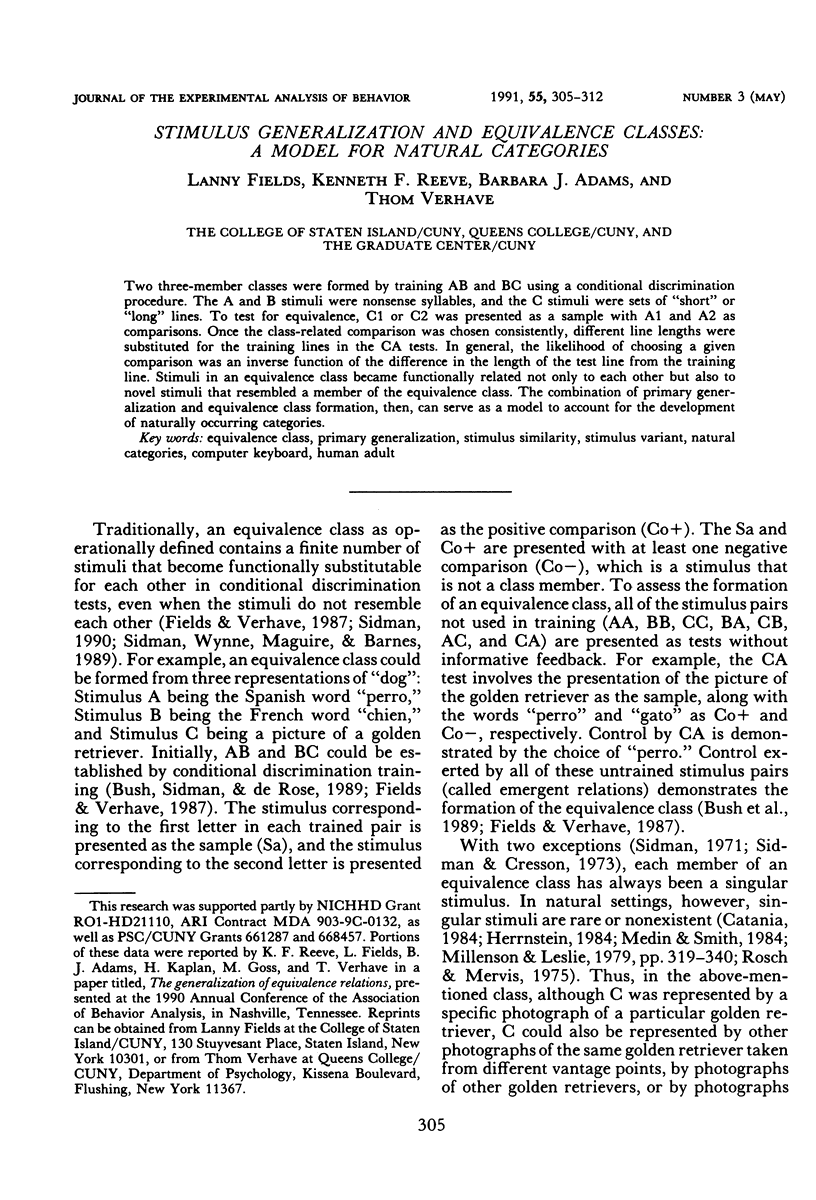
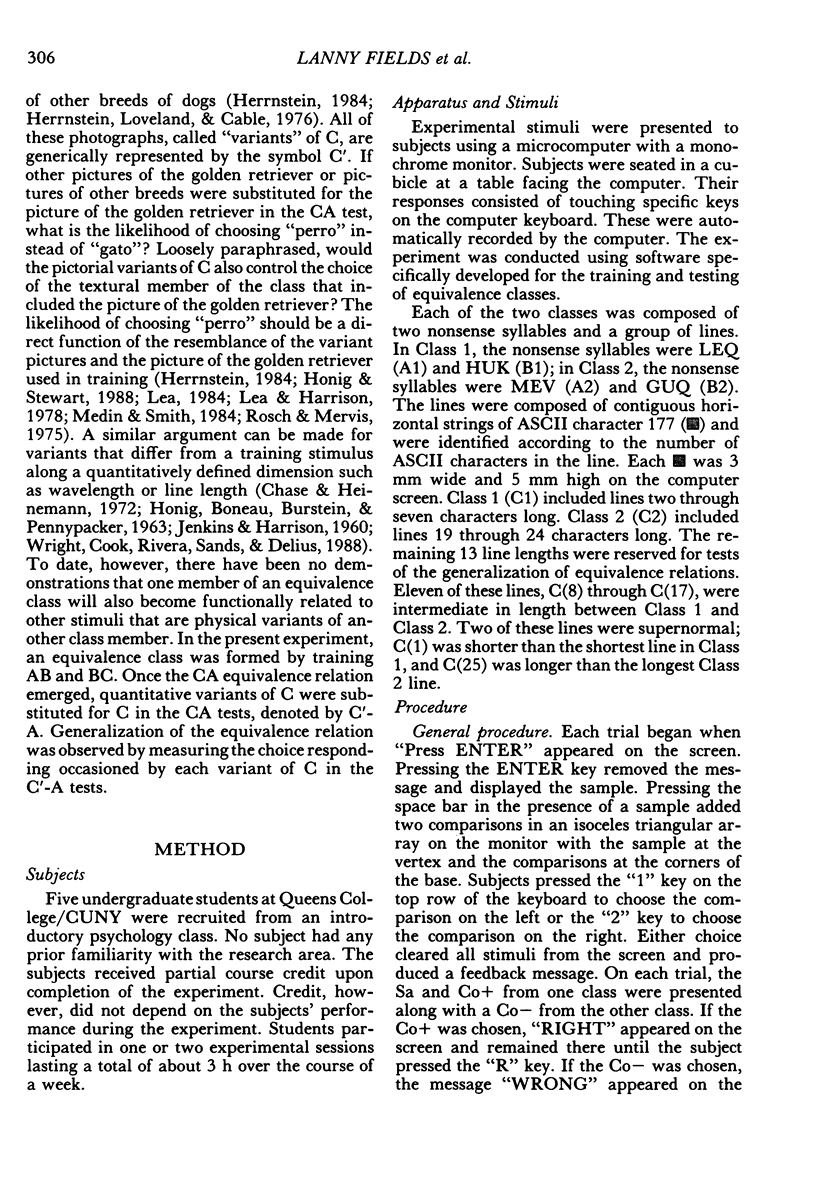
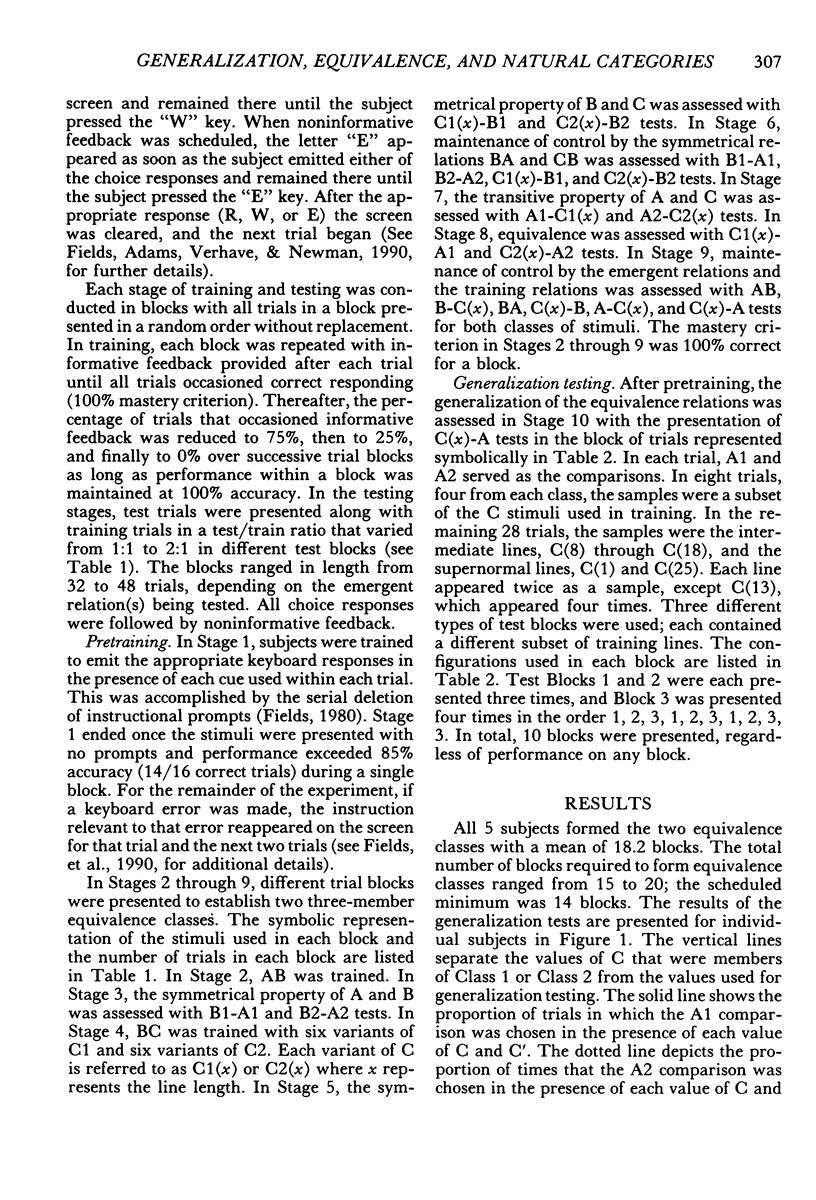
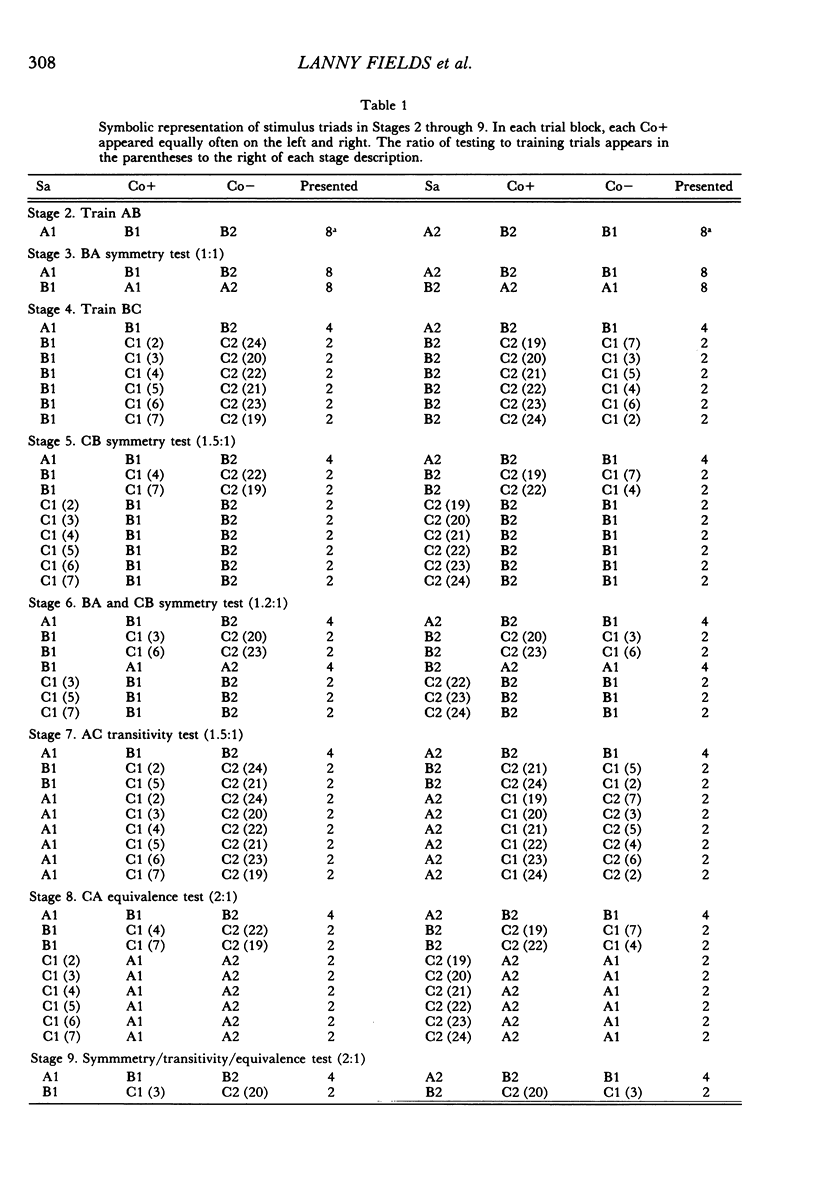
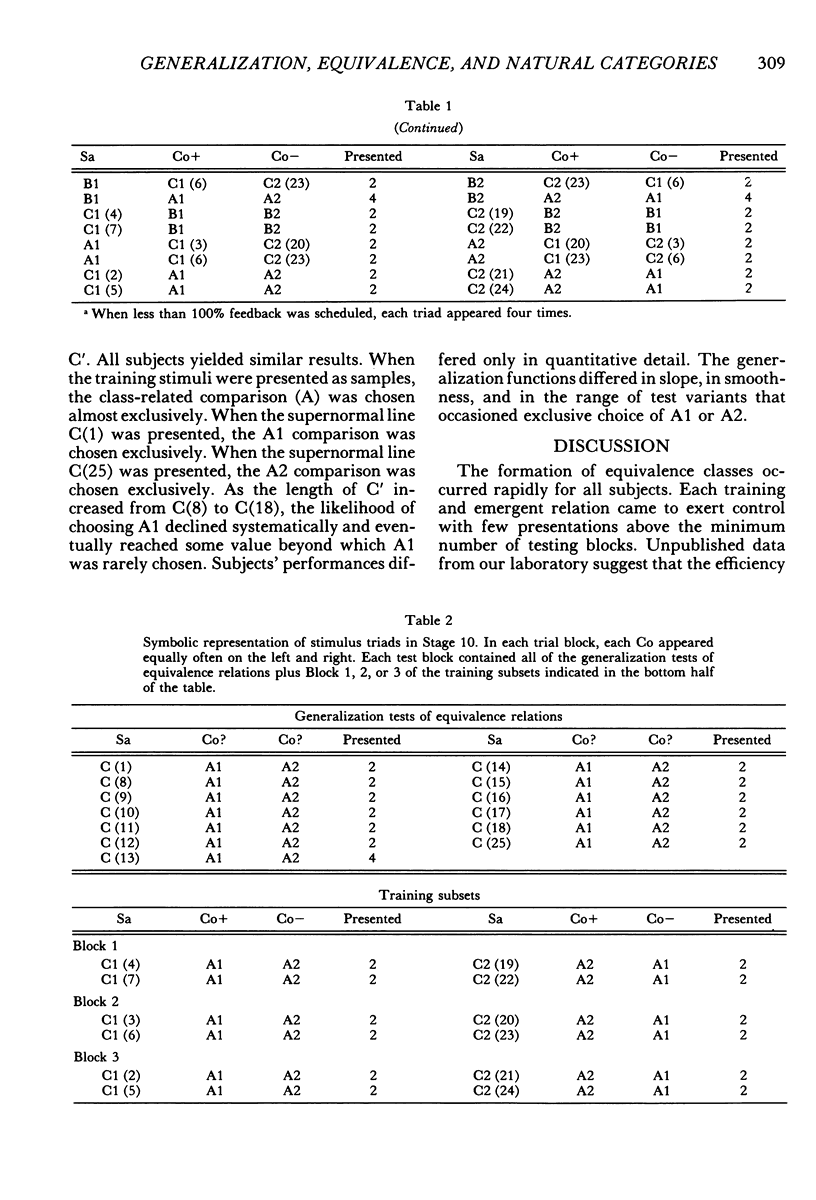
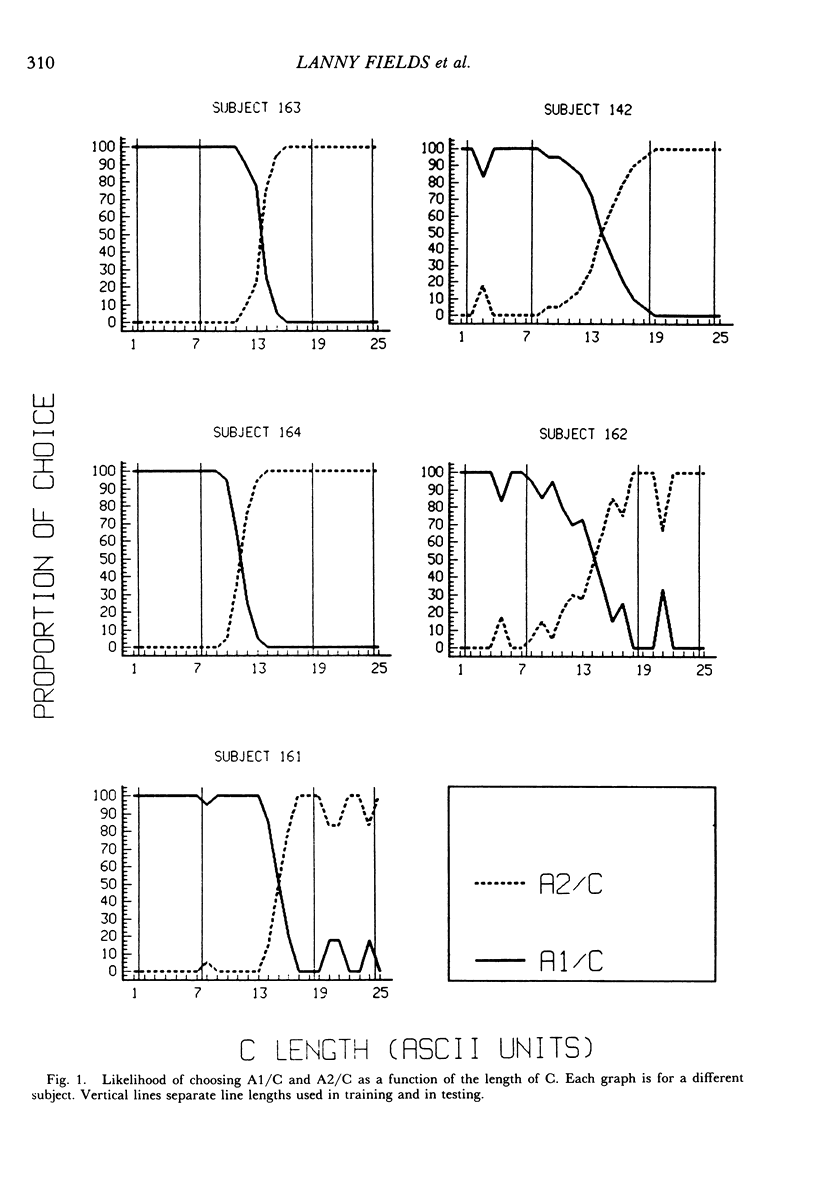
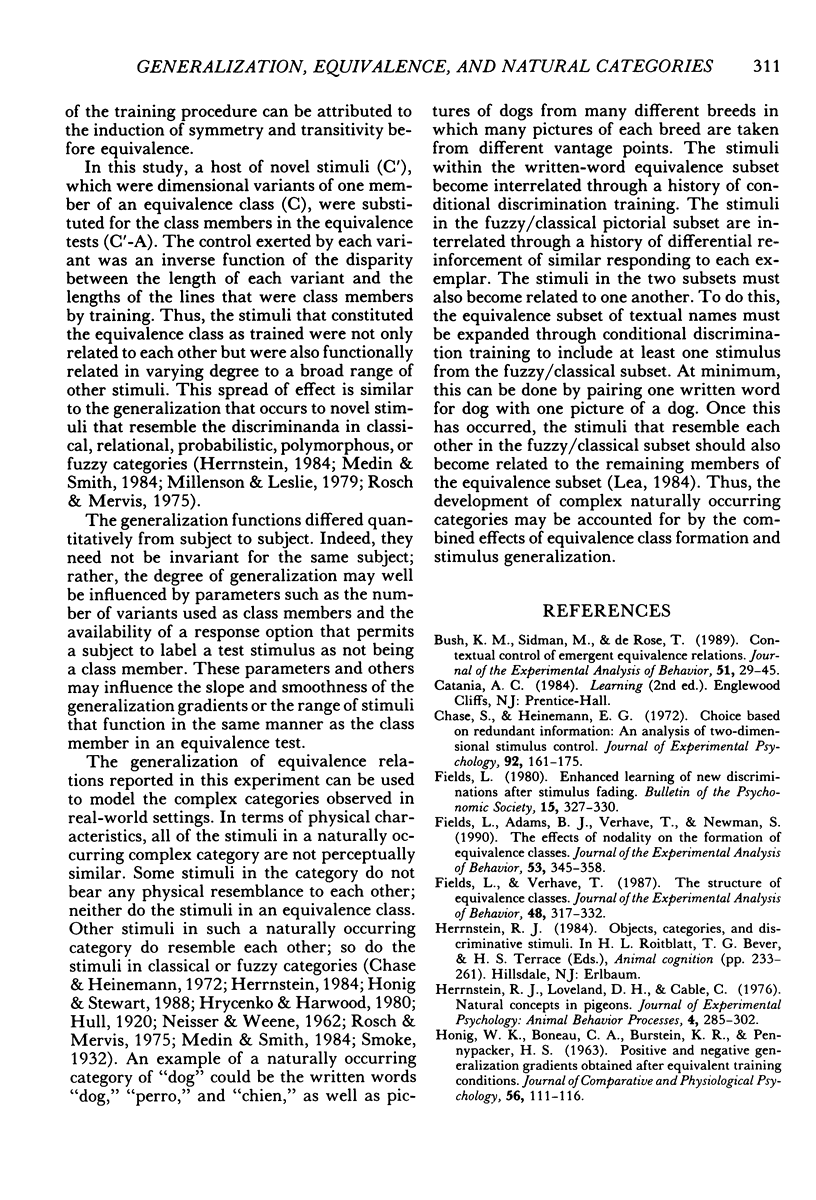
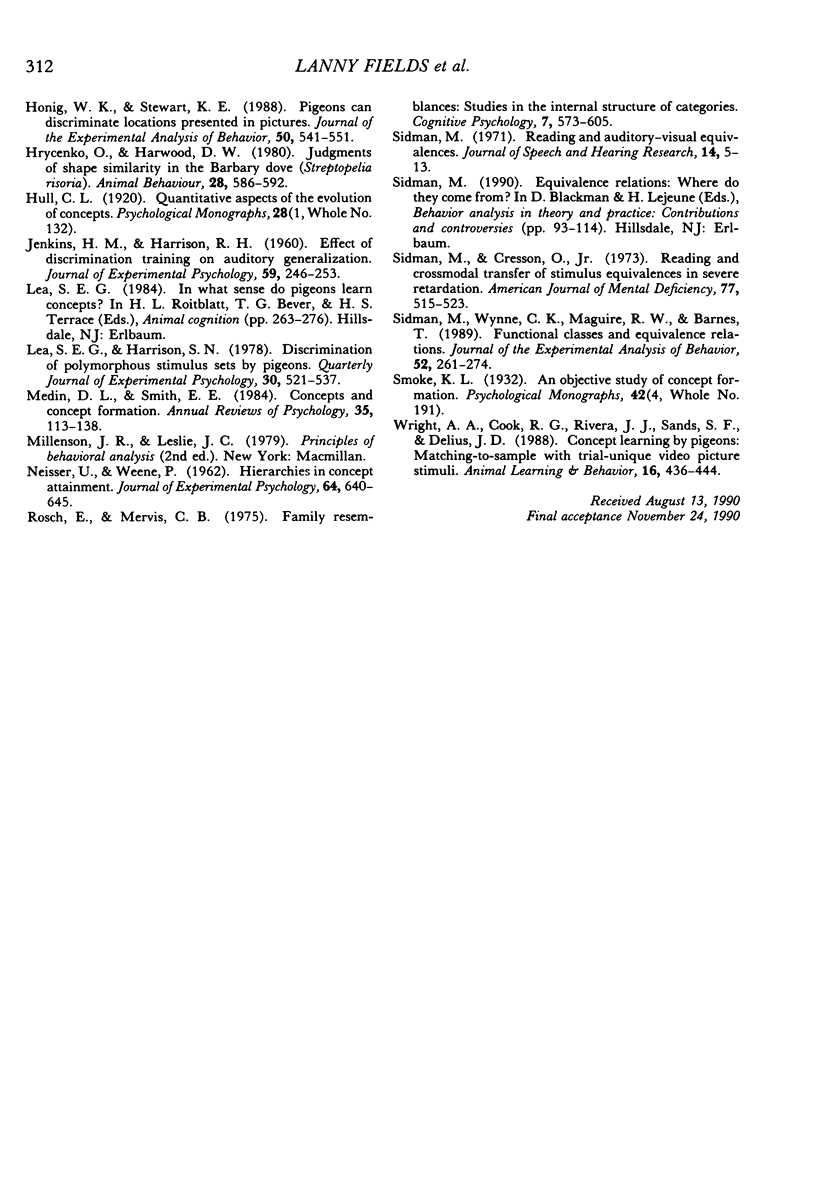
Selected References
These references are in PubMed. This may not be the complete list of references from this article.
- Bush K. M., Sidman M., de Rose T. Contextual control of emergent equivalence relations. J Exp Anal Behav. 1989 Jan;51(1):29–45. doi: 10.1901/jeab.1989.51-29. [DOI] [PMC free article] [PubMed] [Google Scholar]
- Chase S., Heinemann E. G. Choices based on redundant information: an analysis of two-dimensional stimulus control. J Exp Psychol. 1972 Feb;92(2):161–175. doi: 10.1037/h0032083. [DOI] [PubMed] [Google Scholar]
- Fields L., Adams B. J., Verhave T., Newman S. The effects of nodality on the formation of equivalence classes. J Exp Anal Behav. 1990 May;53(3):345–358. doi: 10.1901/jeab.1990.53-345. [DOI] [PMC free article] [PubMed] [Google Scholar]
- Fields L., Verhave T. The structure of equivalence classes. J Exp Anal Behav. 1987 Sep;48(2):317–332. doi: 10.1901/jeab.1987.48-317. [DOI] [PMC free article] [PubMed] [Google Scholar]
- Hernstein R. J., Loveland D. H., Cable C. Natural concepts in pigeons. J Exp Psychol Anim Behav Process. 1976 Oct;2(4):285–302. doi: 10.1037//0097-7403.2.4.285. [DOI] [PubMed] [Google Scholar]
- Honig W. K., Stewart K. E. Pigeons can discriminate locations presented in pictures. J Exp Anal Behav. 1988 Nov;50(3):541–551. doi: 10.1901/jeab.1988.50-541. [DOI] [PMC free article] [PubMed] [Google Scholar]
- JENKINS H. M., HARRISON R. H. Effect of discrimination training on auditory generalization. J Exp Psychol. 1960 Apr;59:246–253. doi: 10.1037/h0041661. [DOI] [PubMed] [Google Scholar]
- NEISSER U., WEENE P. Hierarchies in concept attainment. J Exp Psychol. 1962 Dec;64:640–645. doi: 10.1037/h0042549. [DOI] [PubMed] [Google Scholar]
- Sidman M., Cresson O., Jr Reading and crossmodal transfer of stimulus equivalences in severe retardation. Am J Ment Defic. 1973 Mar;77(5):515–523. [PubMed] [Google Scholar]
- Sidman M. Reading and auditory-visual equivalences. J Speech Hear Res. 1971 Mar;14(1):5–13. doi: 10.1044/jshr.1401.05. [DOI] [PubMed] [Google Scholar]
- Sidman M., Wynne C. K., Maguire R. W., Barnes T. Functional classes and equivalence relations. J Exp Anal Behav. 1989 Nov;52(3):261–274. doi: 10.1901/jeab.1989.52-261. [DOI] [PMC free article] [PubMed] [Google Scholar]


